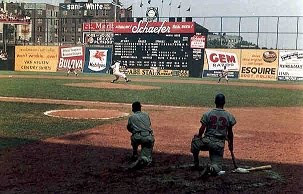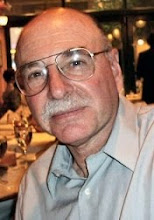 As someone who lived in the San Francisco Bay Area for almost 30 years, I suffered through many years of bad baseball played in graceless ballparks. The Oakland-Alameda County Coliseum, where the Oakland A's play, lost its charm more than a decade ago when more than 20,000 seats were built in what previously was an open area beyond the outfield fences. The edifice killed what was previously a great view of the Oakland Hills and did nothing to enhance the overall baseball experience. The monstrous addition was built at the behest of Oakland Raiders owner Al Davis to accommodate additional football fans. Many ridicule the structure as Mount Davis.
As someone who lived in the San Francisco Bay Area for almost 30 years, I suffered through many years of bad baseball played in graceless ballparks. The Oakland-Alameda County Coliseum, where the Oakland A's play, lost its charm more than a decade ago when more than 20,000 seats were built in what previously was an open area beyond the outfield fences. The edifice killed what was previously a great view of the Oakland Hills and did nothing to enhance the overall baseball experience. The monstrous addition was built at the behest of Oakland Raiders owner Al Davis to accommodate additional football fans. Many ridicule the structure as Mount Davis.San Francisco Giants fans had it no better. Their teams were generally dreadful through the
 1970's and 1980s. It was only in the late 1990s that the team improved. And as for the stadium, Candlestick Park, it was more wind tunnel than baseball field. The great Roger Maris once said "The trouble with this ballpark is that they built it alongside the bay. They should have built it under the bay.” It wasn't until the construction of Pacific Bell Park and the move of the team there in 2000, that Giants fans could take pride in their ballyard.
1970's and 1980s. It was only in the late 1990s that the team improved. And as for the stadium, Candlestick Park, it was more wind tunnel than baseball field. The great Roger Maris once said "The trouble with this ballpark is that they built it alongside the bay. They should have built it under the bay.” It wasn't until the construction of Pacific Bell Park and the move of the team there in 2000, that Giants fans could take pride in their ballyard.The Oakland-Alameda County Coliseum and Candlestick Park represent a class of baseball parks built in the last 40 years that have aged into decrepitude.
 However, there are other, older ballparks, whose age has, if anything, made them even more enjoyable, more cherished, as time passes. Like a beloved Grandmother, Boston's Fenway park, built in 1912, and Chicago's Wrigley Field, 1914, never lose their place in fans' hearts. Of course, if you're a rabid fan of a rival team such as the New York Yankees or the St. Louis Cardinals, Wrigley Field and Fenway Park tend to generate a lot more steam then esteem.
However, there are other, older ballparks, whose age has, if anything, made them even more enjoyable, more cherished, as time passes. Like a beloved Grandmother, Boston's Fenway park, built in 1912, and Chicago's Wrigley Field, 1914, never lose their place in fans' hearts. Of course, if you're a rabid fan of a rival team such as the New York Yankees or the St. Louis Cardinals, Wrigley Field and Fenway Park tend to generate a lot more steam then esteem. 
Then there are other parks, as old or even older than Fenway and Wrigley, that have died a noble death and are simply just a memory. These are the parks that have been destroyed to build a housing project, or a shopping mall, or to create open space. One of these ballparks is Ebbets field and it holds a special place in my heart.
Ebbets field was the home of the Brooklyn Dodgers from its opening in 1913 until September 24, 1957 -- the last Dodger home game of the 1957 baseball season. The Dodgers subsequently moved to Los Angeles, breaking the hearts of almost everyone in Brooklyn, including me.
Like a first love, thoughts of Ebbets field evoke indelible memories. I saw my very first baseball
 game there in 1955. In fact, though more than 50 years have passed, thoughts of that game still make me emotional. I vividly recall the anticipation I felt when my father told me that he, my best friend Willie, Willie's Father, Sam, and I would be going to the Dodgers-Milwaukee Braves game. I distinctly remember walking up the stairs at the Eastern Parkway subway station. At the time, Eastern Parkway was of the more posh streets in Brooklyn. I recall marvelling at the impressive buildings on the avenue and being in awe of the mass of humanity heading down Franklin Avenue to Ebbets field.
game there in 1955. In fact, though more than 50 years have passed, thoughts of that game still make me emotional. I vividly recall the anticipation I felt when my father told me that he, my best friend Willie, Willie's Father, Sam, and I would be going to the Dodgers-Milwaukee Braves game. I distinctly remember walking up the stairs at the Eastern Parkway subway station. At the time, Eastern Parkway was of the more posh streets in Brooklyn. I recall marvelling at the impressive buildings on the avenue and being in awe of the mass of humanity heading down Franklin Avenue to Ebbets field.I can see it now, the outside facade of the stadium, the ticket taker's booth, the vendor selling scorecards -- most likely 5 cents in 1955. But most of all, I remember walking through the semi-dark underbelly of the stadium and emerging through a grandstand entrance that bathed everyone in bright sunlight and startled me with the most vivid green grass I had ever seen. That otherworldly green seems almost searing in my mind's eye.
 I scanned the field. I saw the outfield fence with all its advertisements. One sign had special significance. "Hit Sign, Win Suit" it said. This was an ad for Abe Stark's clothing store. If any player hit that sign "on the fly" during a game, he'd get a free suit.
I scanned the field. I saw the outfield fence with all its advertisements. One sign had special significance. "Hit Sign, Win Suit" it said. This was an ad for Abe Stark's clothing store. If any player hit that sign "on the fly" during a game, he'd get a free suit.I also saw the high right field fence. One of the charms of the old ballparks is that they took on the unusual dimensions of the city streets they sat on. Ebbets field sat on an elongated rectangle of property bounded by Bedford Avenue in right field, Montgomery Street in left field, Franklin Avenue beyond third base, and Sullivan Place beyond first base. The Bedford Avenue and Franklin Avenue sides were much longer than the Montgomery Street and Sullivan Place sides. So the outfield dimensions, especially in right field, were quite short. To make it more difficult to hit a home run over the right field fence, Ebbets field sported a high right field wall. Duke Snider, one of the stars of the Dodger teams of the 1950's, made a habit of hitting wonderfully high, arching home runs over that fence.
Another attribute of those old parks, actually an attribute of that era, was brushback pitches. Pitchers of the day were very aggressive, and seemingly no game could be completed without a pitcher throwing a baseball close enough to a player's body -- often his head-- so that the player had to hit the dirt. Often there was a retaliation by the opposing pitcher. This typically led to a bench clearing brawl. In fact, just such a sequence of events happened in the Dodgers-Braves game. I can't recall who hit who, but I do recall both benches racing onto the field, punches being thrown, and a few ejections. Standard fare for a 1955 baseball game.
I don't remember what the final score of the game was, but I do remember the Dodgers winning, Duke hitting a homer, and Carl Furillo, an excellent hitter with a magnificent throwing arm, also hitting a home run for the Brooklyns.
Walking away from the field that day, a young boy's heart filled with joy, I thought that life couldn't get any better than that.
Time has passed. Ebbets field is gone. But the happy memories linger.
Got a memory, good or bad, about an old ballpark? Let me know.
Laugh for the Day
What's the longest word in the English language?
No, it's not antidisestablishmentarianism. Guess again.
No, not pneumonoultramicroscopicsilicovolcanoconiosis.
Give up?
It's smiles. Notice that there's a mile between the first and last s.
Cry for the Day
Although most of us are aware of the horror and lethality of HIV/AIDS, there are other highly infectious and lethal diseases that affect millions worldwide. For instance diarrhea infects 4 billion people annually (yes that's billion with a b) and kills 2.2 million annually. See Top Deadly Diseases of the Developing World.
